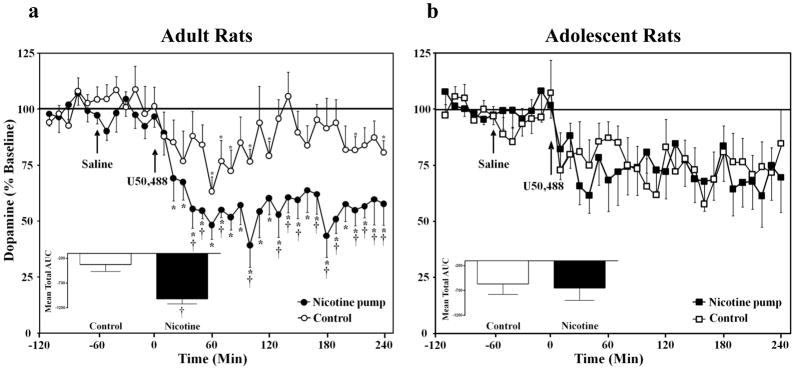Fig. 3.
Data reflect extracellular dopamine levels in the NAcc expressed as a percentage of basal values (± SEM) in control and nicotine-treated rats. Separate groups of adult control (n=9), adult nicotine-treated (n=8), adolescent control (n=7), or nicotine-treated adolescents (n=6) were included. In adults (Fig. 3a), U50,488 (5 mg/kg) significantly decreased dopamine overflow in control and nicotine-treated rats relative to baseline (*p ≤ 0.05). The decreases in dopamine were larger in nicotine-treated adults as compared to controls (†p ≤ 0.05). The figure insets reflect the mean total AUC (± SEM) following U50,488. These data show that nicotine-treated adults displayed decreases in NAcc dopamine following U50,488 that were lower relative to adult controls (†p ≤ 0.05). However, these effects were not observed in adolescent rats (Fig. 3b).

